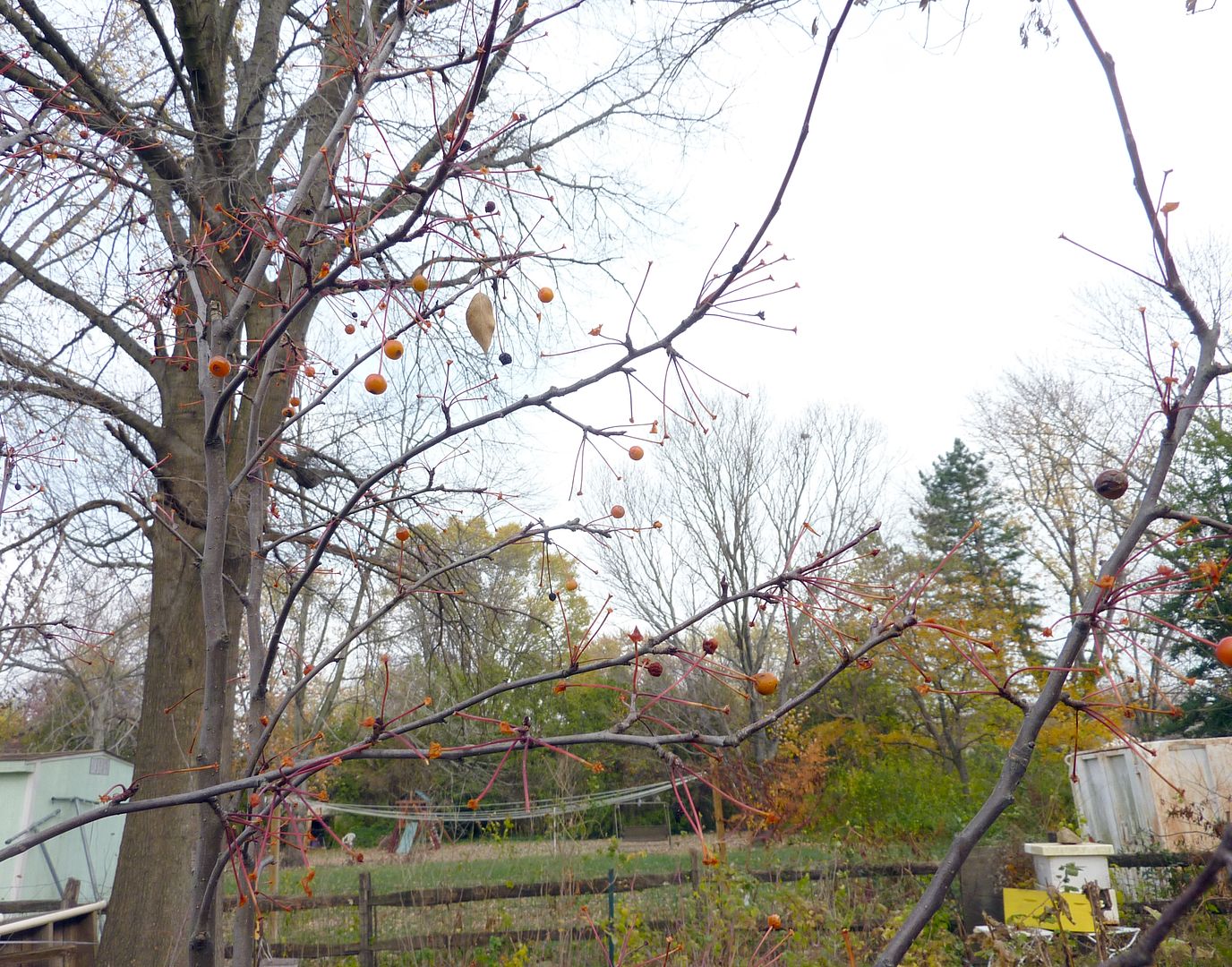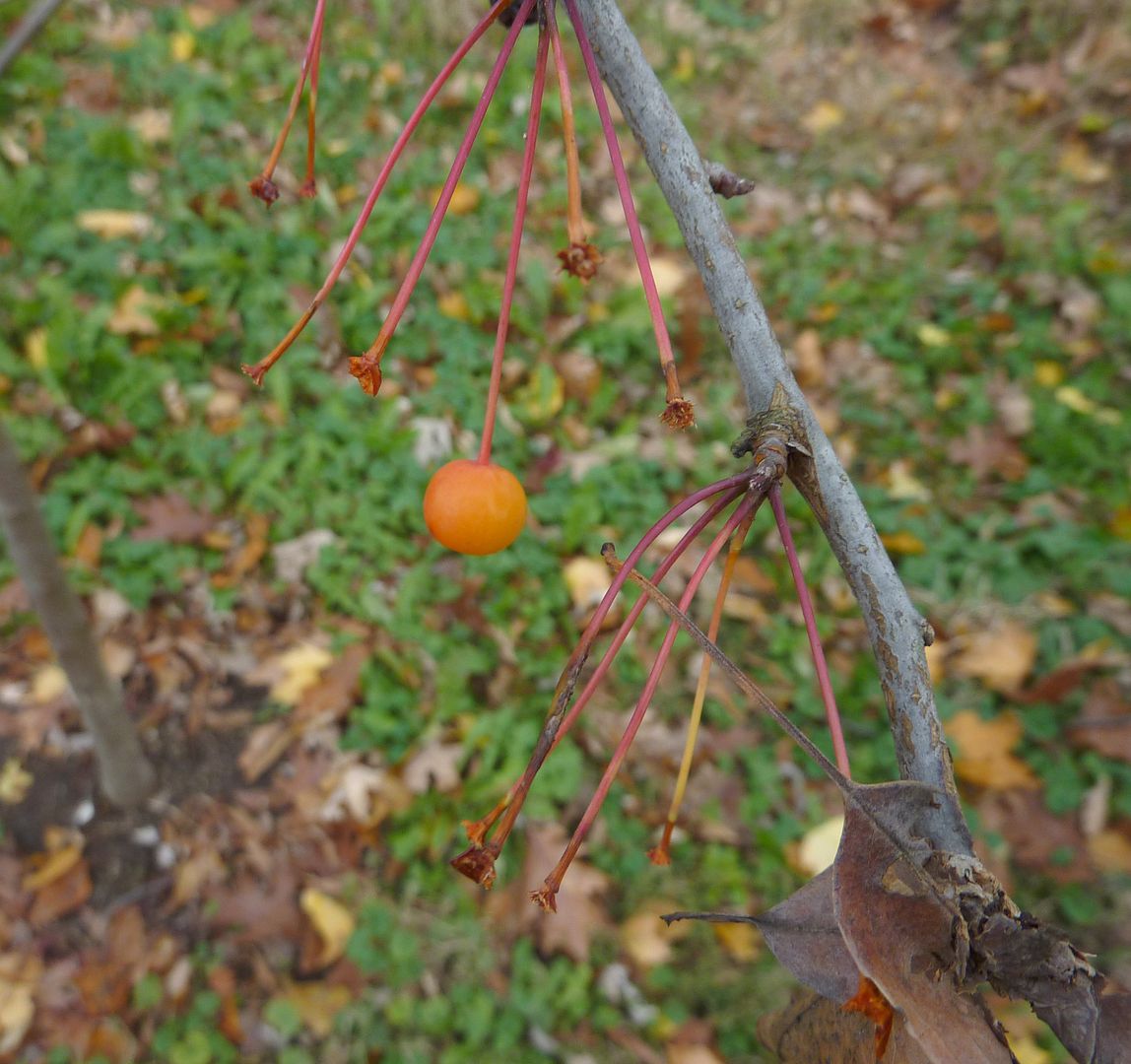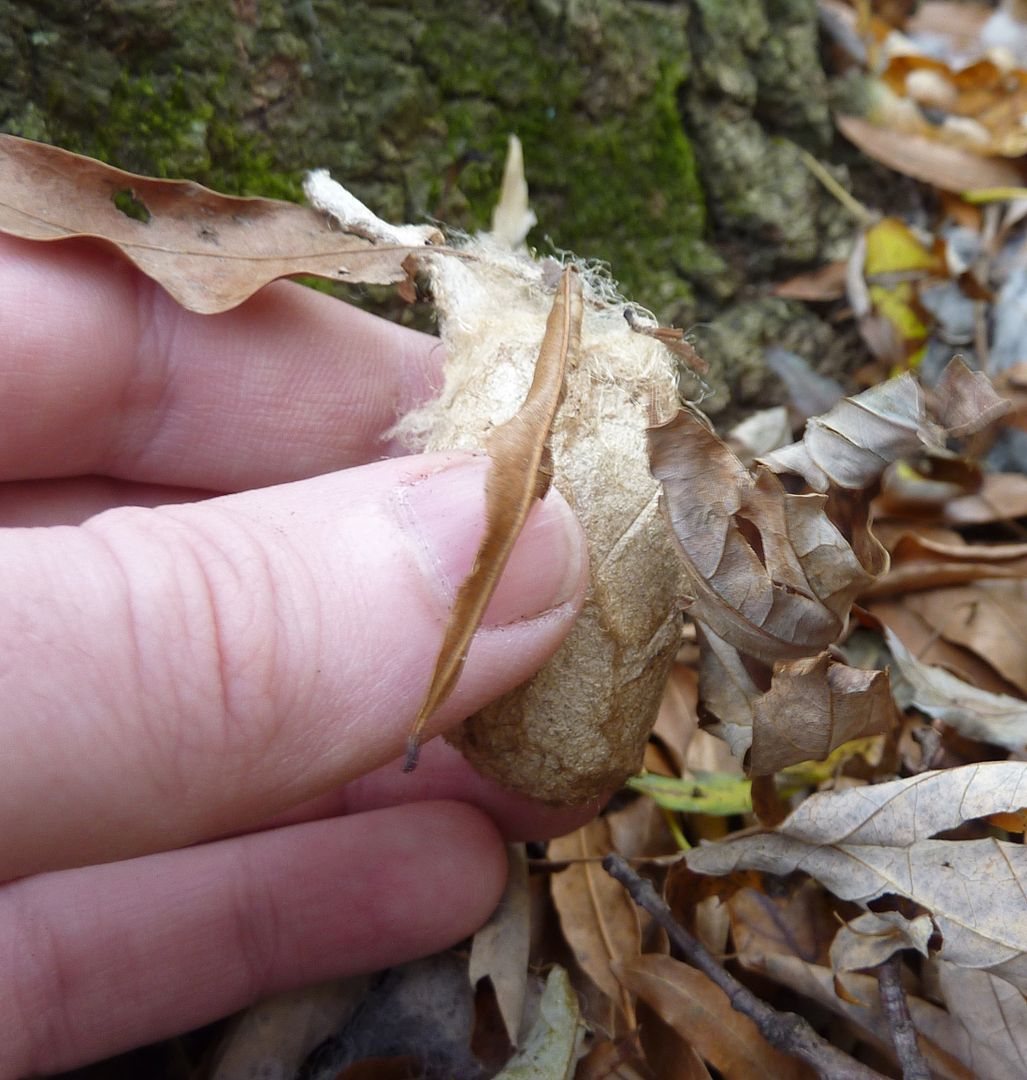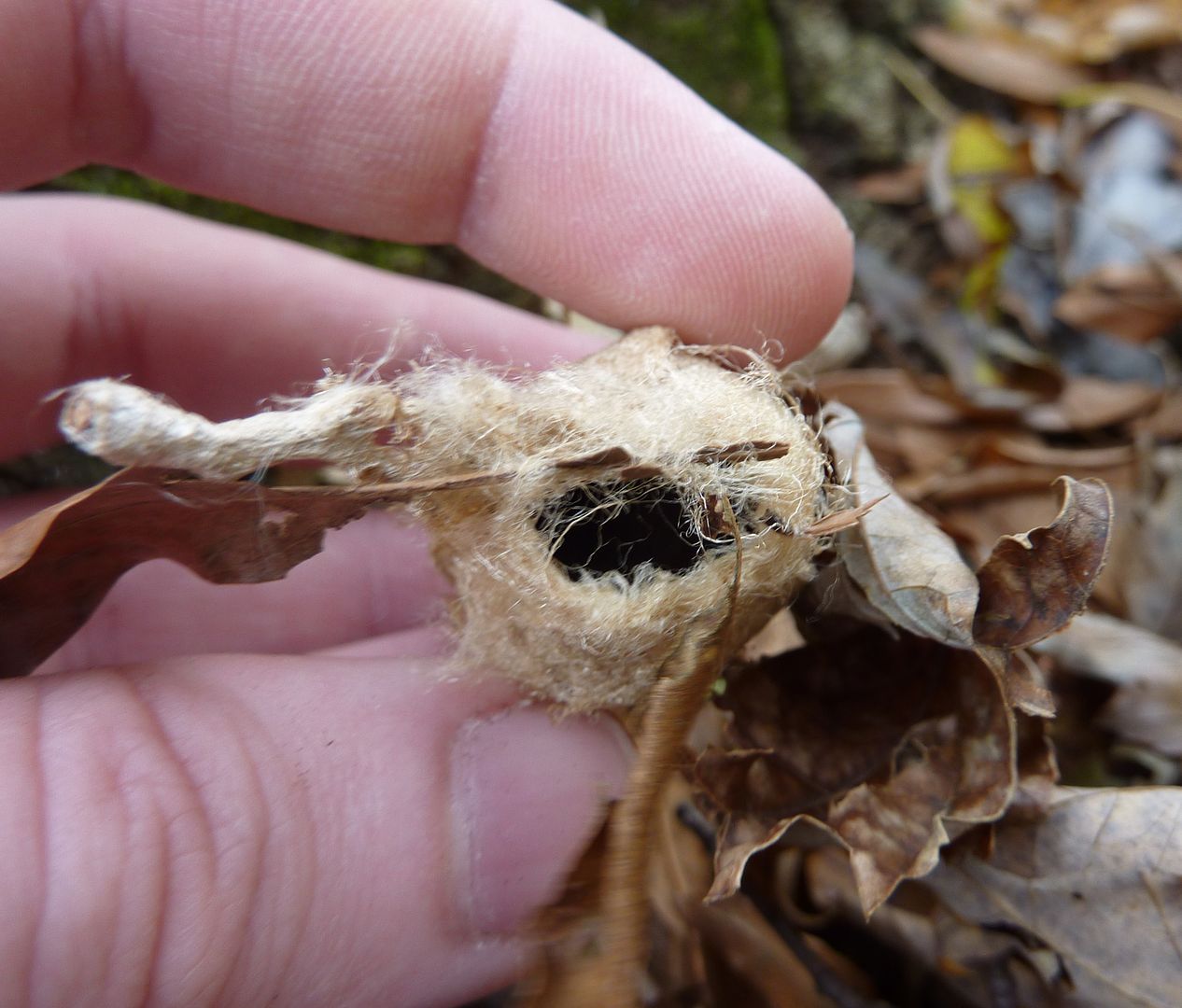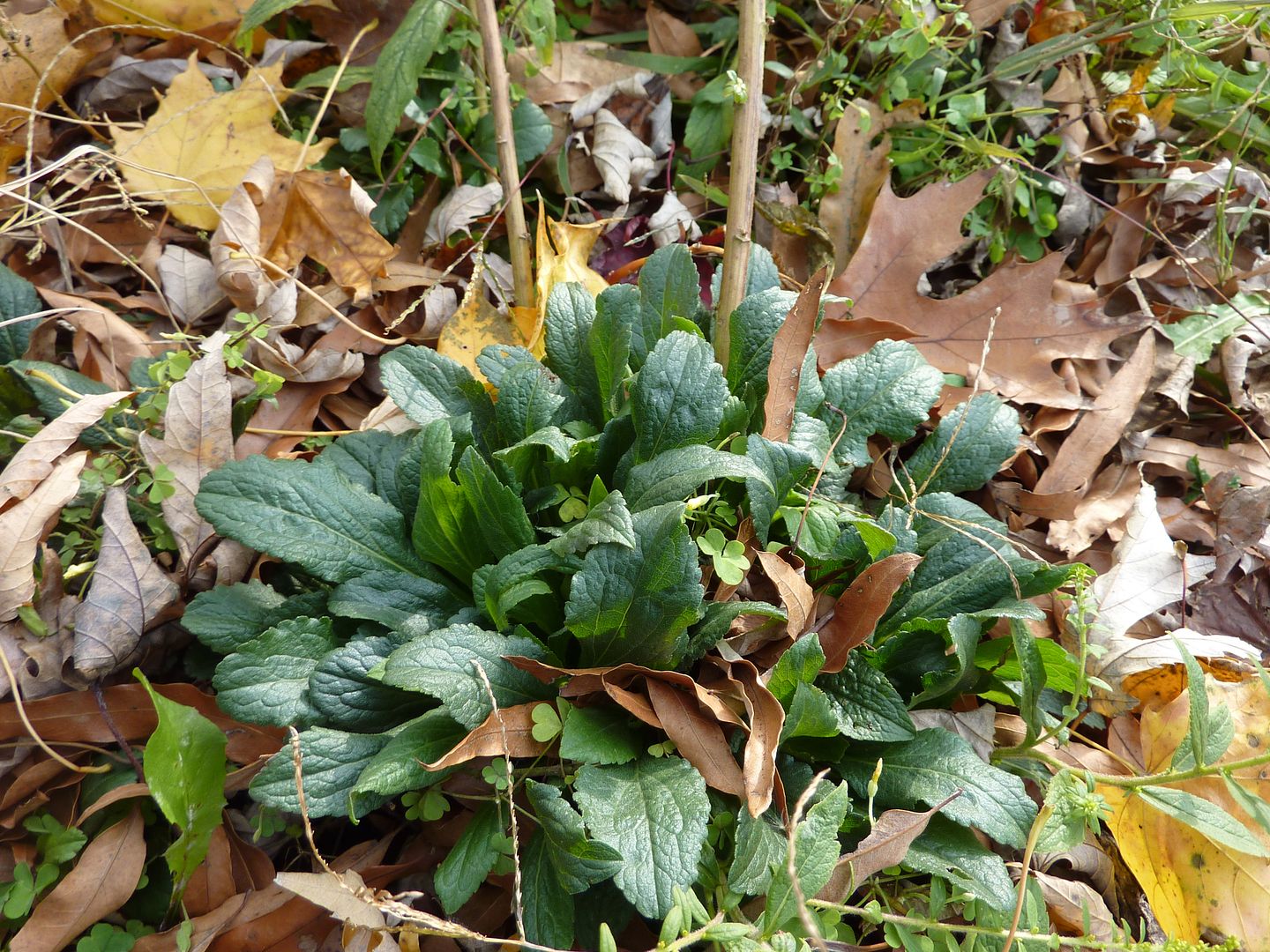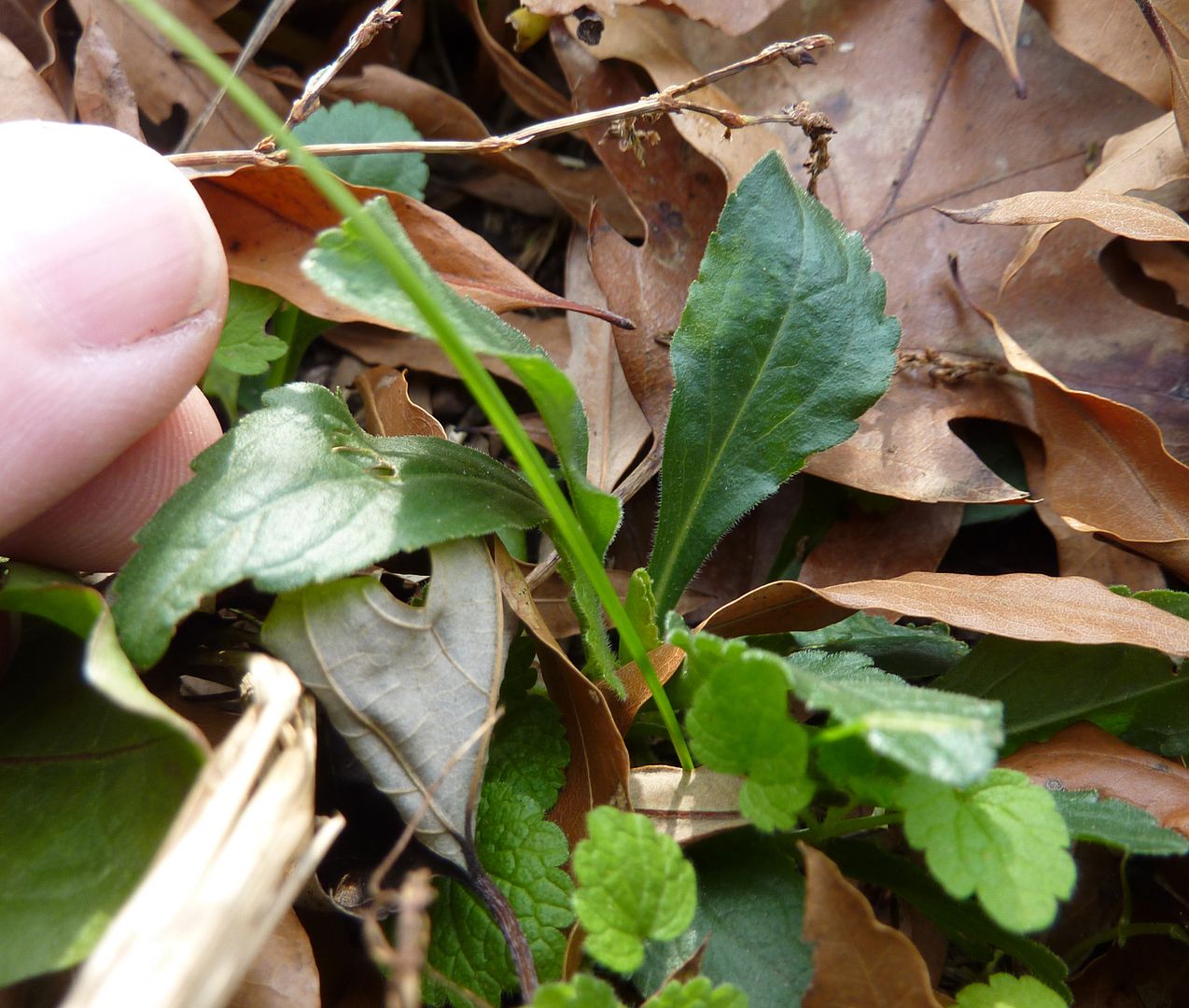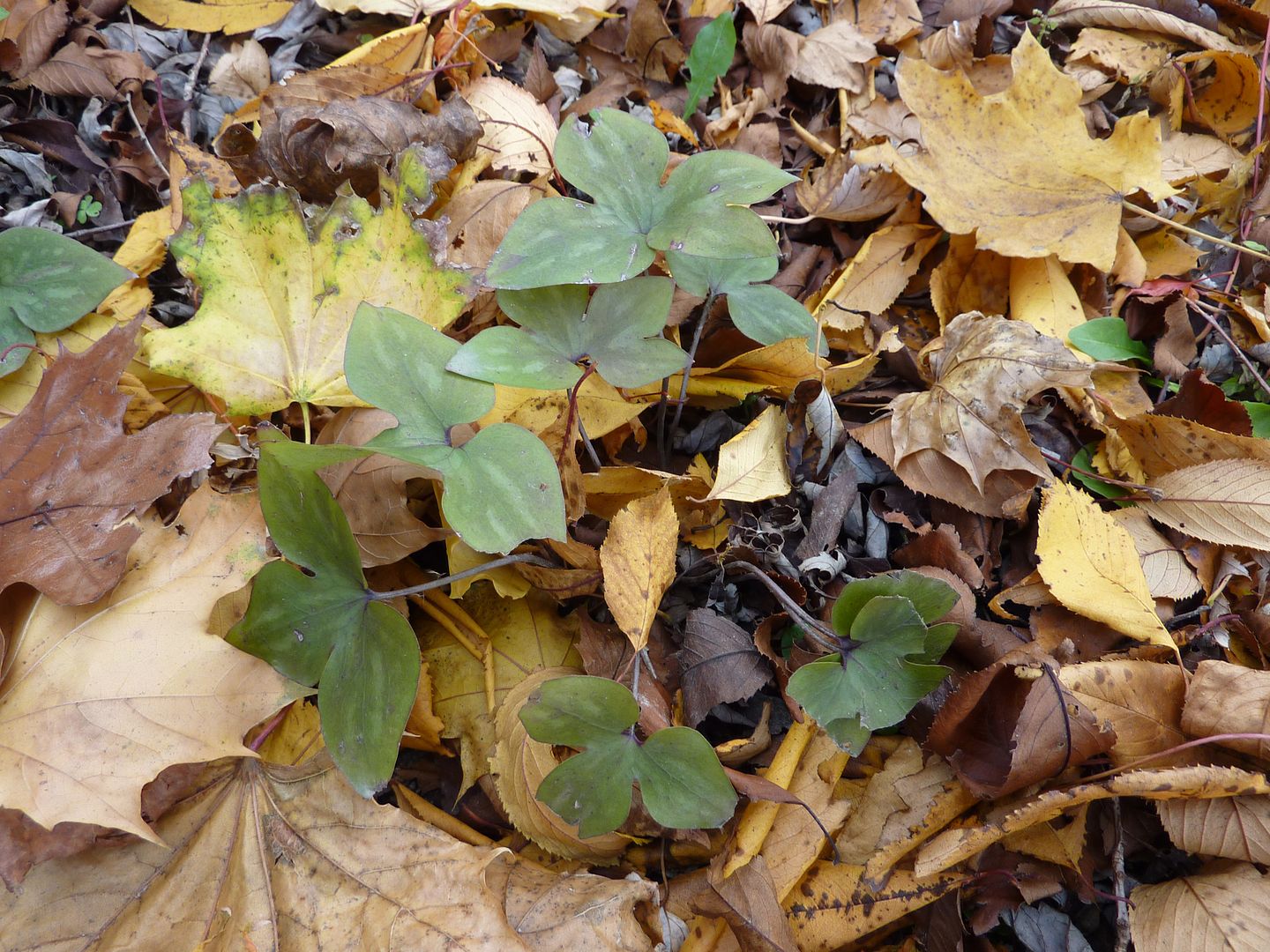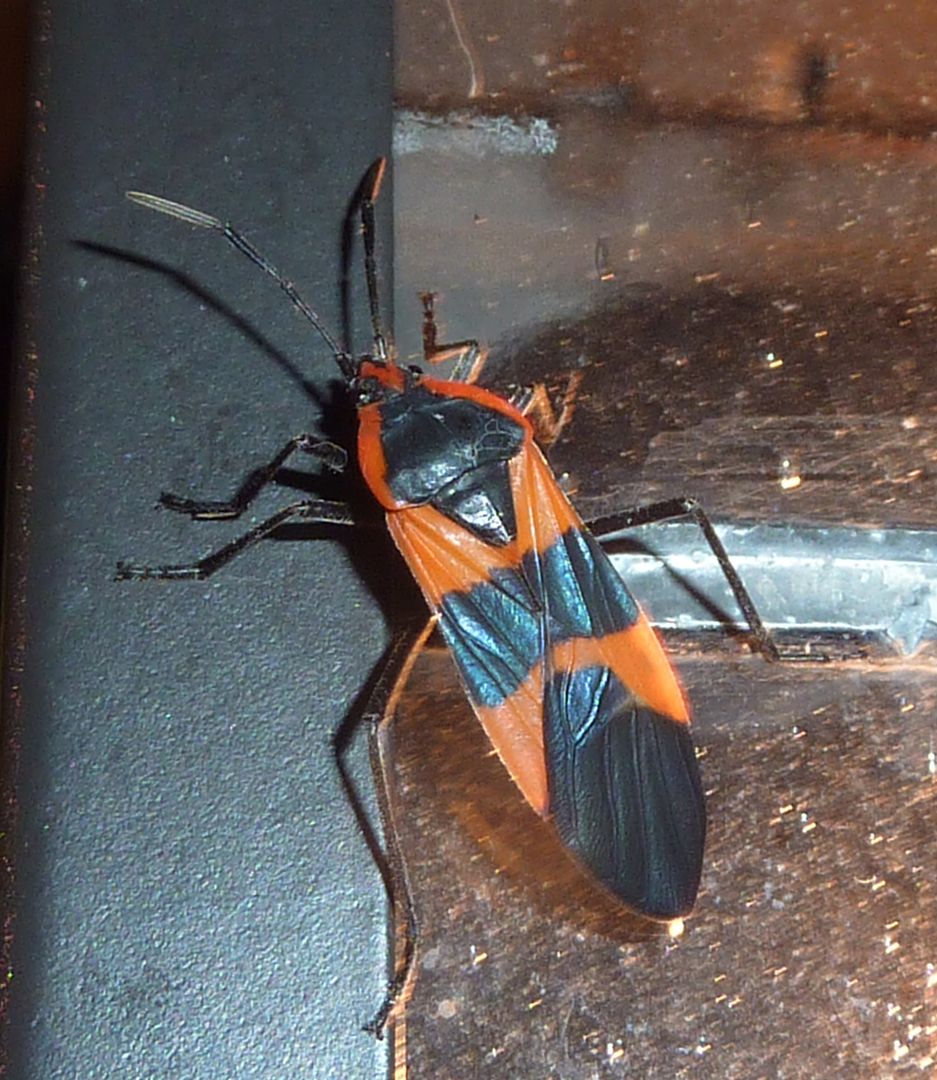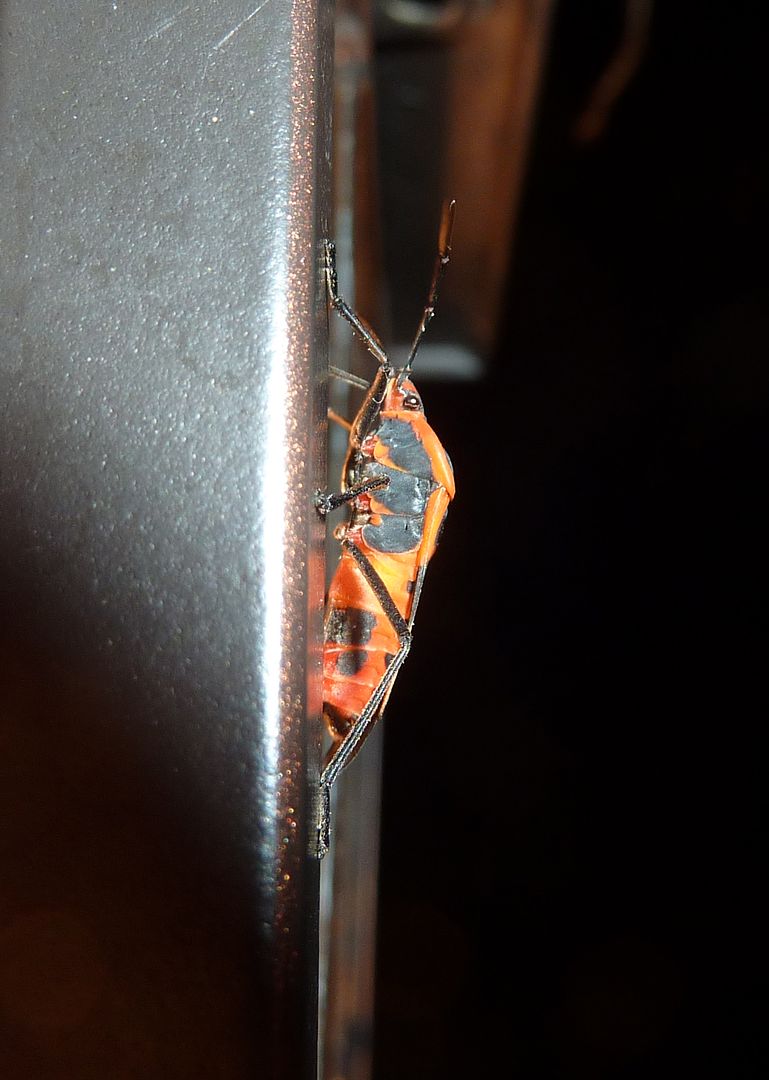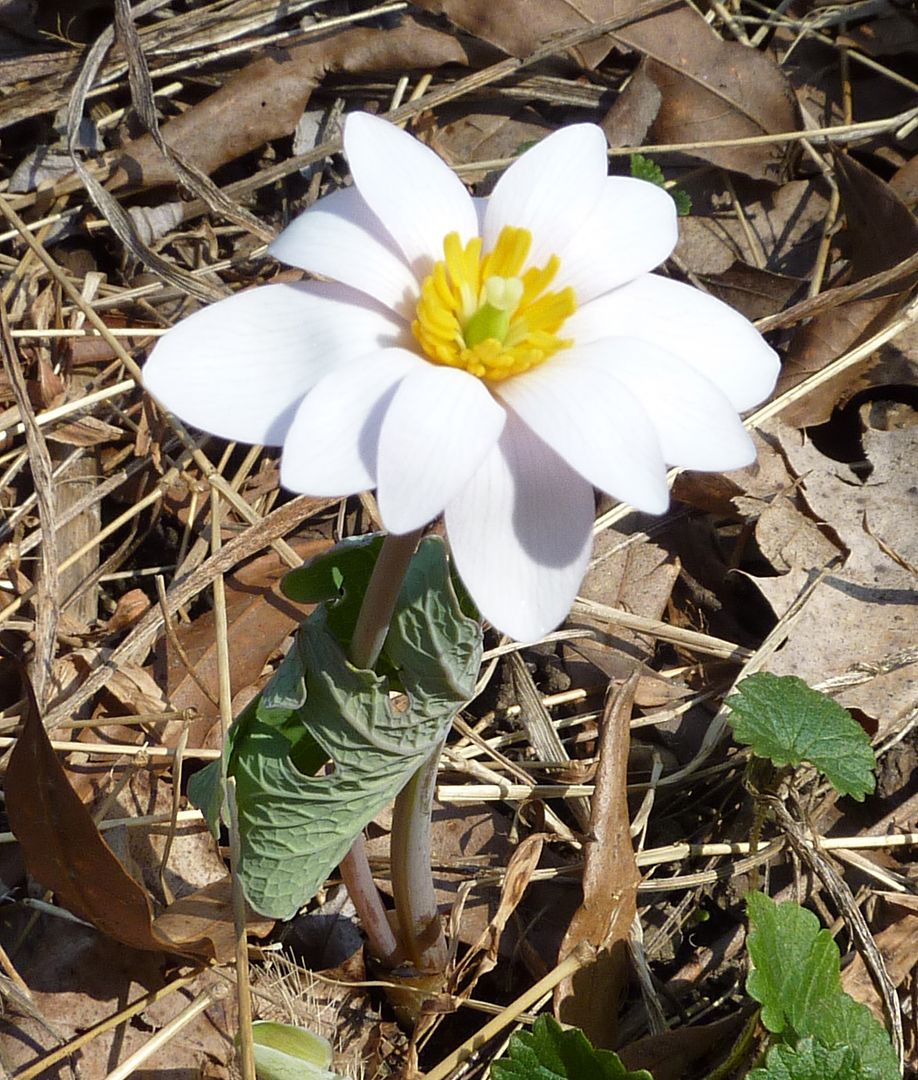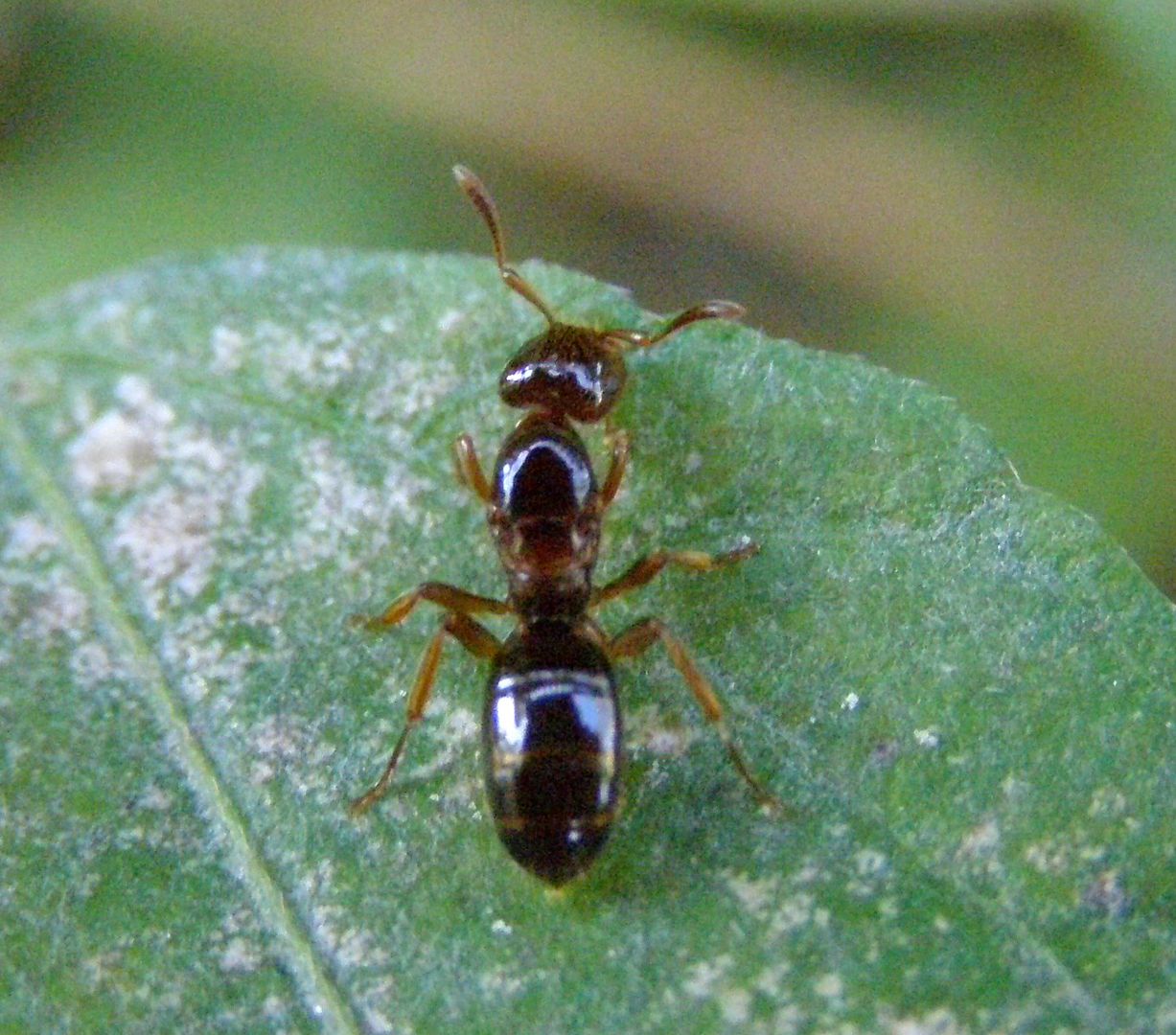Just to show off what the coral honeysuckle, Lonicera sempervirens, has to offer in the late winter. It's still flowering sporadically on new growth. It's got a few berries too. It's staying nice and compact even though there's a cable wire running next to it, a simple cut was all that's needed to get it to stay away. And it hasn't grown back in that direction at all. That said, my only complaint about this plant is it's to easy to snap off a stem. At the start of the year maybe 40% of the plant died because a squirrel chewed through one of the stems at the base of the plant.
First frost all those leaves should fall off and the plant will go dormant until next spring. Spring time is the best time for flowers because of all the new growth bursting out of the plant.
Monday, November 29, 2010
Saturday, November 27, 2010
Cabbage Aphids
Brevicoryne brassicae, Cabbage Aphids, on the leafy green to some sort of cabbage growing out in the garden. I love the variation in color with this group, and I wonder if another species isn't mixed in or weather the color variance has to do with age and the type of cabbage they're feeding on. Cabbage is a cold weather crop that grows best over the autumn, spring, and moderate times of winter. It's a crop that's been selectively bread into numerous other crops. Brussels Sprouts, Kale, Cauliflower, Broccoli, and even Ornamental Cabbage used to all be the same simple growing leafy green plant. It grew in southern Europe and apparently was just a couple of leaves. It was bread around the world into the numerous varieties we have today. Despite this though the Cabbage Aphid still recognizes it's host plant regardless of what form it takes.
Tuesday, November 23, 2010
Hungry Birds
So normally the crabapple tree would be covered in these bright red-orange berries but it seems the birds have taken a liking to them early this year.
What I'm left with though are brightly colored stems. These won't look as pretty when the tree is covered in snow but we'll see what happens.
This is a shame that the birds got a little greedy as the crab apples covered in snow is really charming in the winter time. I suppose any berry plant in the winter would be charming to see. Oh well.
What I'm left with though are brightly colored stems. These won't look as pretty when the tree is covered in snow but we'll see what happens.
This is a shame that the birds got a little greedy as the crab apples covered in snow is really charming in the winter time. I suppose any berry plant in the winter would be charming to see. Oh well.
Labels:
Apple,
Color,
fall color
Sunday, November 21, 2010
Polyphemus Moth Cocoon
Earlier this summer I stumbled upon a mating pair of Polyphemus moths. I took the female home, she laid some eggs and I let her go. I then attempted rearing the caterpillars in captivity but this was my first time doing this. Sadly I failed, they all died shortly after. Normally this would be the end of the story but it's not. You see, I was feeding the caterpillars leaves to the oak and maple trees we have in our yard... what I didn't expect was the Polyphemus moth laying eggs on them before departing.
Hidden in the fallen leaves at the base of our willow oak is the cocoon to a Polyphemus moth.
It's empty of course. It's far to late in the year to find adults.
I showed this picture to someone who's opinion I trust is correct. She raises several species of giant silk moth in captivity. She said the texture, shape, size, and even it's location (the leaf litter around oak and maple trees) are exactly what she'd expect a Polyphemus moth to produce. It's also rock solid. I can't believe how hard this thing is.
So while I may have missed this one emerging, hopefully next year's generations will find my trees to be appetizing and I'll get another chance in the spring.
Hidden in the fallen leaves at the base of our willow oak is the cocoon to a Polyphemus moth.
It's empty of course. It's far to late in the year to find adults.
I showed this picture to someone who's opinion I trust is correct. She raises several species of giant silk moth in captivity. She said the texture, shape, size, and even it's location (the leaf litter around oak and maple trees) are exactly what she'd expect a Polyphemus moth to produce. It's also rock solid. I can't believe how hard this thing is.
So while I may have missed this one emerging, hopefully next year's generations will find my trees to be appetizing and I'll get another chance in the spring.
Saturday, November 20, 2010
Green Growth in the Autumn
Despite winter's eminent arrival, some forbs push out new growth close to ground level. The towering stems shooting out of this plant have served their purpose. Over the past year this Goldenrod has leafed out, flowered, and is now setting seed. Despite this though, next year's growth has already begun.
This can be a good time to catch root suckering plants. If they're spreading in an undesired direction, transplanting or cutting the root at that point could be called for. Waiting until next spring will also work but it's best to catch it early. I'm leaving these here because it's a fairly young plant and I can stand it spreading a little.
This can also be a good time to point out seedlings. Many seeds will germinate the same year and produce a small amount of growth. Here is a young goldenrod plant sprouting through the leaf litter. The contrasting fallen leaf color can help make them easy to spot. To the side of my house I've spotted a lot of thistle plants coming up from when I let it go to seed. I don't mind a thistle or two but there are dozens of plants coming up that I'll deal with next year.
Some plants only produce the leaves to get extra energy. For many species the leaves are only temporary. Cold temperatures will damage a lot of the leaves and new ones will have to be put on next year when it's warmer.
Here a Hepatica plant still has the leaves it's held onto all year. This plant is a semi-evergreen which means these leaves will last most of the winter but die off just before flowering next year. This is a nice plant to have around spring time wildflowers just because the growth helps mark where they're planted. Most spring wildflowers die back to the ground by the end of summer.
This can be a good time to catch root suckering plants. If they're spreading in an undesired direction, transplanting or cutting the root at that point could be called for. Waiting until next spring will also work but it's best to catch it early. I'm leaving these here because it's a fairly young plant and I can stand it spreading a little.
This can also be a good time to point out seedlings. Many seeds will germinate the same year and produce a small amount of growth. Here is a young goldenrod plant sprouting through the leaf litter. The contrasting fallen leaf color can help make them easy to spot. To the side of my house I've spotted a lot of thistle plants coming up from when I let it go to seed. I don't mind a thistle or two but there are dozens of plants coming up that I'll deal with next year.
Some plants only produce the leaves to get extra energy. For many species the leaves are only temporary. Cold temperatures will damage a lot of the leaves and new ones will have to be put on next year when it's warmer.
Here a Hepatica plant still has the leaves it's held onto all year. This plant is a semi-evergreen which means these leaves will last most of the winter but die off just before flowering next year. This is a nice plant to have around spring time wildflowers just because the growth helps mark where they're planted. Most spring wildflowers die back to the ground by the end of summer.
Thursday, November 18, 2010
Volunteer Gardeners: Restoring a Native Prairie
Here's a delightful video from the Volunteer Gardener's, who I've subscribed to only just recently. I like how they took seeds from the natives that were already there and reestablished them after burning out the fescue grasses. Something they kind of skip over though is it normally takes 3 years of constant effort to establish a prairie. I don't know how old this one is in particular but it also seemed like they have a few to many grasses mixed in. Perhaps it's just the camera they're using. Grasses should make up at least 40% of the prairie if only to help hold up some of the taller flowering perennials. But here it seems like they make up 80% of the meadow. That's not a bad thing of course, grasses can be very colorful. I'm not a huge fan of them though because I see grass everywhere and most of them are wind pollinated.
For a good read on establishing your own pocket prairie consider reading Urban and Suburban Meadows: Bringing Meadowscaping to Big and Small Spaces
Wednesday, November 17, 2010
The Large Milkweed Bug
This striking bug is the Large Milkweed Bug, Oncopeltus fasciatus. If I'm not mistaken it's one of the four main insects trying to get into homes at this time of year. The other three are lady bugs, stink bugs, and I think the fourth is a walking stick but you have to live around the right forests for them.
This lone bug was at our street light one day. As colorful as they are I'm happy I only saw one of them. This insect, along with a few others, feed on milkweed seeds and when they hit, they can hit big. They crawl all over the plant to meet members of the opposite sex and occasionally certain plants will get mobbed by them. So while it's neat to see one or two of them, a small swarm can be quite the nuisance in the garden.
Something I wish I had a picture of though is their young on a plant. Young nymphs to this species actually look like milkweed seeds. And when a fresh milkweed pod opens the young bugs will enter and line themselves up, usually all in the same direction, and as they feed they actually mimic the cluster of seeds they're feeding on.
Apparently these insects can be bread in captivity and fed a steady diet of opened (unsalted) sunflower seeds.
Monday, November 15, 2010
Science Nation - Mount St. Helens: Rising From the Ashes
Here's an example of nature recovering from a natural disasters. In a landscape filled with volcanic ash the only species that could thrive there was a wild Lupin. This isn't that surprising though as Legumes tend to enjoy sandy soil and many species benefit from a little ash in the soil to trigger germination. Being a legume also means they create their own fertilizer. Because they're a forb the green growth dies each winter, creating organic matter to be recycled into soil. This allows other species to come back to the devastated landscape but as we see in the video it's not all fair and balanced.
Saturday, November 13, 2010
Black Salve and Bloodroot
So I just planted the last of the bloodroot seeds I got from Prairie Moon Nursery. I went for their $2.00 packet and got what had to be close to 200 seeds. I don't know how long they take to reach a flowering age. I'd expect at least 3 years though.
In researching the plant just now I stumbled onto an herbal remedy made from bloodroot. It's called Black Salve, and apparently it's controversial stuff. Generally people seem to put it on dangerous things like gangrene, skin cancer, and other ailments of that nature. For the most part it causes the dead parts to fall off/out of the body leaving fairly large holes where they once were in the body. Not to be used lightly.
Here is a rather disgusting video to that effect where a man uses it to remove two moles from his face.
I'm growing it because I think the flowers look pretty.
In researching the plant just now I stumbled onto an herbal remedy made from bloodroot. It's called Black Salve, and apparently it's controversial stuff. Generally people seem to put it on dangerous things like gangrene, skin cancer, and other ailments of that nature. For the most part it causes the dead parts to fall off/out of the body leaving fairly large holes where they once were in the body. Not to be used lightly.
Here is a rather disgusting video to that effect where a man uses it to remove two moles from his face.
I'm growing it because I think the flowers look pretty.
Tuesday, November 9, 2010
A List of Autumn Garden Chores
Today in only a few hours I achieved a few cleaning up garden chores. This included spreading an acidic soil mix to all the plants that benefit their blooming from acidic soil. This includes Rhododendrons, Hollies, and Blue Berries.
Thanks to a recent shipment of wood I'm left with loads of tiny scrap pieces which I've been spreading to be a reasonable mulch in certain places.
I turned over all the tomato plants and harvested the few green ones that were left. As per instructions in a video I saw I've cut up the plants and left them where they grew as a green mulch.
I transplanted the Bug Bane, which I wasn't able to photograph this year. Apparently it's been getting to much sun and not enough water where it is and the poor thing fried right up. Hopefully it will be happier next to the air conditioner where the water drips out. It tends to be really wet there but it's sort of at the top of a slope too. While it's not what I'd call well drained hopefully it will grow just fine. To my surprise one of the native Rhododendrons is growing fine next to it and doesn't seem to have any signs of root rot. Maybe the water isn't penetrating that deep into the soil.
I'm also working on establishing bluets, Houstonia caerulea. This is such a pain though. It's not that the plants are dying from bad soil conditions, it's just they have the root structure of a clump of moss and squirrels love flipping them upside down. I'm glad I bought 75 of the things. Everyday I have to go out and check on the patches where they're planted and replant them. I add more soil around them and leaf litter hoping they go untouched the next day. For the most part this is working but I still find about two of them have been tampered with. Usually the same plants though.
Thanks to a recent shipment of wood I'm left with loads of tiny scrap pieces which I've been spreading to be a reasonable mulch in certain places.
I turned over all the tomato plants and harvested the few green ones that were left. As per instructions in a video I saw I've cut up the plants and left them where they grew as a green mulch.
I transplanted the Bug Bane, which I wasn't able to photograph this year. Apparently it's been getting to much sun and not enough water where it is and the poor thing fried right up. Hopefully it will be happier next to the air conditioner where the water drips out. It tends to be really wet there but it's sort of at the top of a slope too. While it's not what I'd call well drained hopefully it will grow just fine. To my surprise one of the native Rhododendrons is growing fine next to it and doesn't seem to have any signs of root rot. Maybe the water isn't penetrating that deep into the soil.
I'm also working on establishing bluets, Houstonia caerulea. This is such a pain though. It's not that the plants are dying from bad soil conditions, it's just they have the root structure of a clump of moss and squirrels love flipping them upside down. I'm glad I bought 75 of the things. Everyday I have to go out and check on the patches where they're planted and replant them. I add more soil around them and leaf litter hoping they go untouched the next day. For the most part this is working but I still find about two of them have been tampered with. Usually the same plants though.
Labels:
Garden
Saturday, November 6, 2010
Book Review: Urban and Suburban Meadows by Catherine Zimmerman
Urban and Suburban Meadows: Bringing Meadowscaping to Big and Small Spaces by Catherine Zimmerman
by Catherine Zimmerman
This is an excellent book on the topic of installing a meadow or prairie in urban and suburban locations. I found it to be a simple and quick read. Catherine has a quick and to the point manner or writing. A lot of the chapters read as instructional "how to" guides. This is contrasted with loads of beautiful photos, many of which showcase the works of professional landscape designers who have installed meadows and prairies.
Though the words meadow and prairie are used interchangeable throughout the book, Catherine does make the distinction. Meadows are more common in the eastern North America and are the result of fires clearing holes in forests so that meadow plants take over and establish for a few years. If left to itself the forest would eventually close in and reclaim this land. Prairies, despite being the French word for Meadow, tend to be more set in stone. They occur in areas that get so little rainfall or soil conditions are so poor that few if any woody trees and shrubs can grow there. The look and feel for both though can be the same or so similar that it's not worth making the destination.
Catherine gives a brief summary of why we should only use native plants and allow natural processes to occur. She doesn't go into to much detail other than to say it's to fight weeds and nonnatives take more energy to use. Doug Tallamy's Bringing Nature Home: How You Can Sustain Wildlife with Native Plants, Updated and Expanded goes into way more detail on this topic but his writing style is completely different, and Doug doesn't explain how to install a meadow either.
goes into way more detail on this topic but his writing style is completely different, and Doug doesn't explain how to install a meadow either.
The book goes over everything from site preparation, species selection, design ascetic, long term costs, and even how to biannually set fire to your meadow to control weeds. Fighting weeds is a reoccurring theme in the book. Different methods have to be used depending on weather you planted seeds, plugs, or full grown perennials. They vary from annual mowing, mulching, to burning. When it does come to burning it's really only worth the effort if your meadow is more than an acer or so, otherwise mowing in the early spring is usually all that's required. She also stresses that controlled burns should always be done by professionals and to check with local authorities on obtaining permits before hand.
Planting guides are listed but I found her keys to be less than ideal. America is broken up into several sections, which is nice. But this is fallowed with a long plant list and colored boxes represent the regions. This is okay but breaking the country down this way demands almost every plant to have "minus: this state, this state, and this state" next to it.
Thankfully there are extensive lists of resources, plant nurseries, and natural areas, for every state, except for Alaska and Hawaii.
All and all I found this book to be an easy read, it only took 2 days for me to get through all 271 pages. There are loads of fantastic photos to stress the points in each chapter. I found it highly informative and inspirational. I'm even looking at potential spots to install one a pocket prairie of my own.
Here is a video I found to be relevant to the topics found in this book.
This is an excellent book on the topic of installing a meadow or prairie in urban and suburban locations. I found it to be a simple and quick read. Catherine has a quick and to the point manner or writing. A lot of the chapters read as instructional "how to" guides. This is contrasted with loads of beautiful photos, many of which showcase the works of professional landscape designers who have installed meadows and prairies.
Though the words meadow and prairie are used interchangeable throughout the book, Catherine does make the distinction. Meadows are more common in the eastern North America and are the result of fires clearing holes in forests so that meadow plants take over and establish for a few years. If left to itself the forest would eventually close in and reclaim this land. Prairies, despite being the French word for Meadow, tend to be more set in stone. They occur in areas that get so little rainfall or soil conditions are so poor that few if any woody trees and shrubs can grow there. The look and feel for both though can be the same or so similar that it's not worth making the destination.
Catherine gives a brief summary of why we should only use native plants and allow natural processes to occur. She doesn't go into to much detail other than to say it's to fight weeds and nonnatives take more energy to use. Doug Tallamy's Bringing Nature Home: How You Can Sustain Wildlife with Native Plants, Updated and Expanded
The book goes over everything from site preparation, species selection, design ascetic, long term costs, and even how to biannually set fire to your meadow to control weeds. Fighting weeds is a reoccurring theme in the book. Different methods have to be used depending on weather you planted seeds, plugs, or full grown perennials. They vary from annual mowing, mulching, to burning. When it does come to burning it's really only worth the effort if your meadow is more than an acer or so, otherwise mowing in the early spring is usually all that's required. She also stresses that controlled burns should always be done by professionals and to check with local authorities on obtaining permits before hand.
Planting guides are listed but I found her keys to be less than ideal. America is broken up into several sections, which is nice. But this is fallowed with a long plant list and colored boxes represent the regions. This is okay but breaking the country down this way demands almost every plant to have "minus: this state, this state, and this state" next to it.
Thankfully there are extensive lists of resources, plant nurseries, and natural areas, for every state, except for Alaska and Hawaii.
All and all I found this book to be an easy read, it only took 2 days for me to get through all 271 pages. There are loads of fantastic photos to stress the points in each chapter. I found it highly informative and inspirational. I'm even looking at potential spots to install one a pocket prairie of my own.
Here is a video I found to be relevant to the topics found in this book.
Labels:
Book Review,
native,
Prairie,
Video
Thursday, November 4, 2010
Spider and the Fly
Here is a Syrphid fly Eristalis dimidiata. This was just one of the many pollinators that visited the tall goldenrod this year. Adults feed on nectar while maggots to this species are aquatic. I don't know what the maggots feed on specifically but they're common in eutrophic water, that is pools rich in organic matter. There aren't many photographs of the maggot form but they get the name rat tailed maggot from the tube they use to breath from while under water.
Upon observing the last leaf on my native plum tree I discovered it's being held on by spider silk. The spider is delicately camouflaged with the leaf. Each night she spins a huge web around the tree to catch the last of the night flying insects. I don't believe the adults of this species make it through the winter.
Upon observing the last leaf on my native plum tree I discovered it's being held on by spider silk. The spider is delicately camouflaged with the leaf. Each night she spins a huge web around the tree to catch the last of the night flying insects. I don't believe the adults of this species make it through the winter.
Labels:
Flies,
Flower flies,
Goldenrod,
Spiders
Monday, November 1, 2010
Ant Chat: Episode 23 Fall Ant Activity
Sorry for not doing a show in a while. Also sorry at how socially awkward I sound in the first few minutes. I recorded this all in one take and it's been a while. Around minute 3 though the show comes together. I finally got around to filming some Ponera pennsylvanica. Hopefully I'll get more of them next year. I may have gotten the second invasive Tetramorium species in my yard, Tetramorium tsushima, more from realizing the difference between them and T. species-e. The difference is T. tsushima is .5mm shorter than T. species-e, and T. tsushima tends to be but not consistently bicolored.
 |
And I get to show video of the odd behavior I noticed with Lasius claviger/umbratus queens hanging out on blooming plants of Goldenrod, Solidago sp.
Special Thanks to The Too Gentlemen Podcast for plugging the show a few weeks back. Do note though some of their topics are not work safe but they say it like it is usually. I went to school with one of them, and was asked to guest on the show sometime in the future.
Subscribe to:
Posts (Atom)


